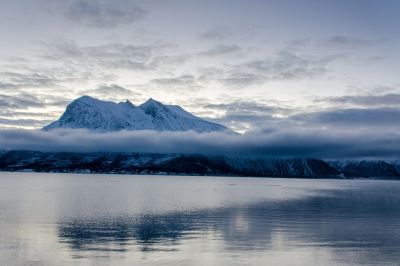

To fully develop the Russian Arctic, it is necessary to create appropriate conditions there and to build schools, kindergartens, social and cultural facilities, to organize a good rest for children in the summer school holidays. This opinion was expressed by Andrey Shevchenko, Chairman of the Federation Council’s Committee on Federal Structure, Regional Policy, Local Self-Government and Northern Affairs. According to him, it is also worth paying special attention to creating a modern transport infrastructure and solving logistics problems.
“We see this problem when we go to the Arctic areas. In Yakutia, for example, some residents have full access to other settlements for less than three months a year, and in the rest of the year, there are no “winter roads” anymore or local airports do not work. This is a vital sphere in the Arctic as a whole,” the senator believes.
"Another issue that we need to discuss is, of course, deliveries of goods to the Northern Territories of Russia. An important law for the development of the Arctic regions has been adopted, and it is necessary to monitor the effectiveness of its implementation now,” said Andrey Shevchenko. The law should provide the Far North regions and the areas equated to them with the goods necessary to ensure the life of the population and the stable operation of the social sector, housing services and utilities, energy supply facilities, as well as the goods for state and municipal needs.
According to the senator, the basic areas of the Russian Arctic are developing dynamically today. “The domestic product growth and industrial development in the Arctic region as a whole, are higher than the Russian average ones. This is the result, among other things, of the support measures provided to the Far East and the Arctic.” The senator named the Program of the Arctic and Far Eastern Hectares among them, as well as the Far Eastern Mortgage Program. “Today, the number of young families in the Far Eastern Federal District and in the Arctic zone as a whole is higher than the average number in Russia. Modern social facilities are under construction in the Arctic, including hospitals and schools.”
Earlier, during a meeting of the Council for the Development of the Far East, the Arctic and the Antarctic, Galina Karelova, Deputy Chairman of the Federation Council, pointed out that it was very difficult to solve such a large set of tasks in the Arctic regions only at the expense of budgetary funds. “Therefore, it is important to involve companies operating in the Arctic in this work.” As positive examples, Galina Karelova named the participation of Norilsk Nickel in the implementation of the comprehensive development plan for the city of Norilsk, stipulating the construction of modern residential buildings, kindergartens, a school and a clinic, as well as the construction of a children’s rehabilitation center in Yakutsk at the expense of ALROSA, and financing the construction of a dormitory building for a school by NOVATEK in the village of Gyda on the Yamal peninsula.
During the last spring parliamentary session, the Federation Council also held a meeting on attracting the investments to ensure the energy supply to the industrial consumers in the Far East and the Arctic, and it was noted that the task of building local energy infrastructure facilities could attract more than 300 bn rubles of investment in case of a state support.
Another area of work discussed at the session was the development of the tourism potential of these areas. At present, out of 77 thousand hectares of land plots allocated for people in the Far East, 9 percent are designed for tourism and recreational purposes, and out of 3.2 thousand hectares, 25 percent of land plots are designed for tourism projects in the Arctic regions. To implement the plans, the Federation Council believes that it is important, first of all, to pay attention to ensuring transport accessibility, improving the access roads to tourism sites and attractions, increasing the capacity of airports, as well as sea and river ports.
On September 1, the law adopted by parliamentarians that regulates the development of tourism in specially protected natural areas that also applies to the Arctic regions, came into force. In addition, a draft law submitted by senators and deputies offering new concepts - “tourist railway train”, “tourist railway route”- is under consideration by the Parliament.
